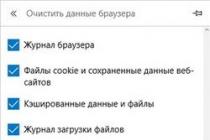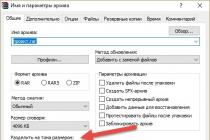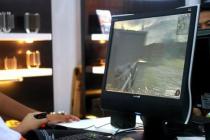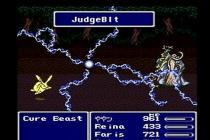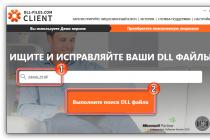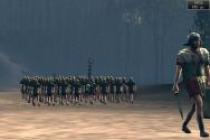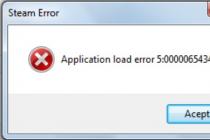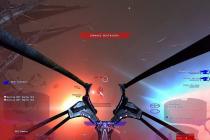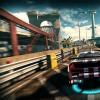Lilya Savchuk
The theater begins with a hanger, and the group from the dressing room. How to make sure that all the necessary information for parents looks harmonious and accessible? What information is interesting for parents, what is not so much? What information is permanent, what is updated? How to arrange, where to hang and put? These questions torment every teacher. I bring to your attention a version of visual and informational material for parents. We have used not only the reception area, but also the hall.
booth "For you parents"
Here is all the information about the work schedule of the medical office, the head's reception hours, contact numbers, information about the teachers. This information is permanent.
Stand "Information to parents"

Here is information about the group mode and changing on significant dates, holidays, etc.
Stand "Our achievements"

Letters, diplomas, gratitude to both educators and children of the group are placed here.
Stand "Everyone knows for a long time around, the fidget is the best friend"

Here we exhibit photos of children from holidays, from excursions, from interesting open classes, etc.
Photo albums:

1. "We came to kindergarten."
2. "Kids, kids, we went for a walk."
3. "The life of wonderful children."
4. "Our holidays"
Move folders

Season information (autumn, winter, spring, summer)
Folding screens, presentations

Here the information changes depending on significant days, holidays, health information, traffic rules, life safety, etc. d.
Pockets - lost

This is where we put things that have been lost for a while.
"Dressing Right"

The scheme in which sequence you need to dress for a walk.
Now we move smoothly into the hall.
Stand "Mom, dad, I am a creative family"

Here we exhibit the joint work of parents and children. Best drawing contests, wall newspapers, etc.
Stand "Restless Hands"

Here we exhibit children's work on modeling and designing from paper.
Exhibition of children's works "Joy with your own hands"

Here parents and children can see children's drawings, appliqué works.
Gratitude Corner "We thank parents for everything

I wrote about it in detail last year. There are pockets in the balls, we enter the most active parents into them.
Thank you emoticons

We stick them on the locker door, write the names of the parents, and for which we thank them. Many are against this, but we have been using this method for several years. And it encourages many parents. At the end of the year, we reward the most active parents with diplomas and medals.
Our dressing rooms are not big.


Of course, do not forget about the lists for lockers, for Czechs. We even use doors for announcements, invitations, information about what we did today

There are stands with folders on the lockers where all the children's work is, each parent can see what their child was doing.
For parents, we offer consultations, booklets, leaflets in printed form. Poems and songs in printed form.
I will be glad if it is useful to someone.
These forms of communication between teachers and parents solve the problem of acquainting parents with the conditions, content and methods of raising children in a preschool institution, allow them to more correctly assess the activities of teachers, revise the methods and techniques of home education, and more objectively see the activities of the educator.
Visual and informational forms are conditionally divided into two subgroups:
1. The tasks of one of them - information and familiarization - is to familiarize parents with the preschool institution itself, the features of its work, with teachers involved in raising children, and overcoming superficial opinions about the work of a preschool institution.
2. The tasks of another group - information and education - are close to the tasks of cognitive forms and are aimed at enriching parents' knowledge about the features of the development and upbringing of preschool children. Their specificity lies in the fact that communication between teachers and parents here is not direct, but indirect - through newspapers, organizing exhibitions, etc., therefore they were singled out as an independent subgroup, and not combined with cognitive forms.
In their use, it is necessary to observe the principle of purposefulness and the principle of systematicity. The main task of these forms of work is to acquaint parents with the conditions, tasks, content and methods of raising children in a preschool educational institution (group) and to help overcome superficial judgments about the role of a kindergarten, to provide practical assistance to the family. These include:
Recording on a tape recorder (dictaphone) conversations with children,
video fragments of the organization of various types of activities, regime moments, classes;
· Photo,
Exhibitions of children's work
Stands, screens, folders-movers.
In pedagogical practice, various types of visualization are used and combined:
natural,
pictorial,
verbal figurative,
informational.
But it should be noted that the attitude of teachers to traditional methods of visual propaganda at the present stage of development of the relationship between the teacher and parents is ambiguous. A number of educators are convinced that visual forms of communication with parents are ineffective in modern conditions. They explain this by the fact that parents are not interested in the materials placed on the stands, folders, sliders. And teachers often seek to replace direct communication with parents with informational announcements, articles from newspapers and magazines. According to other educators, visual forms of communication are able to fulfill the tasks of familiarizing parents with the methods and techniques of education, assisting them in solving emerging problems. At the same time, the teacher needs to act as a qualified adviser who can suggest the necessary material, discuss the difficulty with the parents.
Consider a group of traditional information and familiarization forms.
Corner for parents. It is impossible to imagine a kindergarten without a beautifully and originally designed parent corner. It contains useful information for parents and children: group daily routine, class schedule, daily menu, useful articles and reference materials for parents. The materials of the parent corner can be divided into two parts according to the content:
informational materials: rules for parents, daily routine, various announcements;
materials covering the issues of raising children in kindergarten and family. They reflect the ongoing work on the upbringing and development of children. Parents will clearly see how it is possible to equip a corner or a room for a child, get answers to their questions, find out what consultations will be held in the near future.
1. Choose a suitable place on the wall. It is advisable to place a corner opposite the front door or immediately above the cabinets in the locker room. So the necessary information will immediately catch the eye of parents. Make room on the wall for the future parent corner. Make a tablet stand out of plywood or buy a ready-made one, preferably collapsible, in order to be able to increase or decrease the stand area if necessary.
2. Decide what exactly will fill the parent stand. There must be posters with background information: parents about the rights of the child, life safety for parents (rules of personal safety), parents and the second child, advice from doctors, parents and their responsibilities, etc.
3. Pay attention to the content of reference materials. All articles should be written in an accessible language, without complicated terms, font size - at least 14 pt. Complete the information with colorful pictures.
4. Prepare and place information about the children's institution and staff, indicating contact numbers. This will give parents the opportunity to receive personal advice if necessary. The schedule of the day, the daily menu, information about the pupils of the group (height, weight and other indicators) - all this is an indispensable part of the parent's corner.
5. Traditionally, the parent corner is made in the form of a tower, the roof of which can be made of any material (paper, self-adhesive oilcloth, straw, branches, etc.). The corner is decorated with drawings, applications and crafts of children. You can also ask the parents themselves, who, together with the children, will be happy to take part in this creative event.
But you can also think about the non-trivial design of the corner. There are many options here. You can decorate the booth in accordance with the name of the group or the general design of the reception. For example, in the form of a locomotive with wagons. To do this, for each article or memo (they are usually issued in A4 format), glue wheels from multi-colored cardboard, make the edging of trailers with colored paper.
Exhibitions, vernissages of children's works. Their goal is to show parents important sections of the program or the success of children in mastering the program (drawings, homemade toys, children's books, albums, etc.).
For example: an exhibition highlighting the sections of the program “Visual activity of children in the family and kindergarten”, “Toy and its educational role” or exhibitions of children's works “Autumn is a reserve”, “Winter has come”, etc.
Information sheets. They may contain the following information:
information about additional activities with children;
requests for help
gratitude to volunteers, etc.
Notes for parents. A small description (instruction) of the correct (competent) way to perform any action.
Folders-movers. They are formed according to the thematic principle: “So that our children do not get sick”, “The role of the father in raising children”, etc. The folder is given for temporary use to parents.
When parents become familiar with the contents of the folder-slider, they should talk with them about what they have read, answer questions that have arisen, listen to suggestions, etc.
The parent newspaper is issued by the parents themselves. In it, they note interesting cases from the life of the family, share their experience of upbringing on certain issues. For example, "Family day off", "My mom", "My dad", "I'm at home", etc.
Video films. They are created on a specific topic, for example, “Labor education of a child in a family”, “Labor education of children in kindergarten”, etc.
These forms of work with parents include
- design of photomontages;
joint creation of a subject-developing environment;
· family and group albums "Our friendly family", "Our life day after day", "Education from all sides";
photo exhibitions “My grandmother is the best”, “Mom and me, happy moments”, “Dad, mom, I am a friendly family”;
· emotional corner “I am like this today”, “Hello, I have come” and others.
« Visual and informational forms of interaction with parents in preschool educational institutions»
Prepared by: Kroshukhina O.A. Date: 11/15/2016
What tasks pursue visual-informational forms of interaction with parents, which are also called "mediated communication"?
- Information education of parents, their acquaintance with the methods of raising children, i.e. promotion of pedagogical knowledge, provision of practical assistance to families;
- Familiarization of parents with the preschool institution itself, the features of its work, with teachers involved in raising children;
- The opportunity for parents to objectively see the activities of the educator.
The dressing room, where all parents visit almost every day, serves as a place for visual information in the group. For a favorable perception of the proposed material in this room of the group, it is necessary to create coziness and comfort.
Types of visibility:
The materials of the parent corner can be divided according to the content into two parts :
- Educational(materials covering the issues of raising children in kindergarten and family)
- Informational (informational materials: rules for parents, daily routine, menus, various announcements, etc.)
It is impossible to imagine a kindergarten without a beautifully and originally designed parent corner.The parent should be attracted by visual information and interested in it. For this, new approaches to design are proposed. Recently, information corners are designed according to a single plot: one fairy tale or poem, in the form of a forest, a flower meadow, a water kingdom, a starry sky, or in accordance with the name of the group. The options for designing stands today are unlimited. The choice of the form and name of the rubric remains with the educator.
Requirements for the design and content of the Parent's Corner:
- Availability. It is important to choose the right place for the Parents' Corner. It is advisable to place it opposite the front door or immediately above the cabinets in the locker room. So the information will immediately catch the eye of the parents. When selecting information material, it should be taken into account that parents are very different people both in terms of education, profession, and status. Therefore, the material should not contain special terminology. It is enough to state it in simple and short sentences.
- brevity. The information selected for parents should be interesting, brief (a selection of the main thoughts relevant to this group, without moralizing).
- Relevance. The topic should attract the attention of parents, interest them. The information must be up to date.
- Aesthetics. Materials must be placed in special pockets made of plexiglass, plastic. It is not allowed to stick sheets of paper to the wall, on the door, as well as the use of adhesive tape, buttons. When formatting information, you should not use handwritten inscriptions, you should not abuse decorative elements, naive images.
- The ratio of text and illustrations(in folders). It is necessary to remember the proportions: approximately 2:6 (2 parts - text, 6 - illustrations). First of all, we must attract the attention of parents, then convey the necessary information to them.
- Literacy. You should not be reminded that a teacher is a qualified specialist and his speech should be literate a priori. Remember, when placing any printed material, a link to the publication is required, including authorship and year of publication.
- Dynamism. Information placed on the stand for parents should be dynamic. It is necessary to strictly observe the deadlines for updating materials.
- The text should be short, clear and legible.Information is given in large print on light paper so that it can be read from a distance of 2-3 meters, the topic is highlighted in color and size. In printed materials, we use a font of at least 16th.
The main sections of the Parent Corner: (instead of the usual headings, use the original ones)
- Reference Information.Information about the Founder of the educational institution, about the leadership of the preschool educational institution, indicating contact numbers; Rules for parents; Provisions. The section may contain information on the observance of children's rights in a preschool institution, addresses and phone numbers where you can turn for help, official documents.Update timing: as needed.Name variations: "For you, parents!"
- Bulletin board.Only current important information is placed on it: when the meeting will be, the decision of the meeting, the parent fee, etc.Update timeline:as needed.
- Age Group Mode. It is permanent, but signs for the summer and winter period.Update timeline:2 times per year. Title options: "Our day", "From morning to evening."
- Menu . Mandatory without abbreviations, indicating the yield of the product, clear handwriting or printed text. The menu can also be used for individual work with parents by making a second pocket in which parents and teachers can place original recipes for their “signature dishes”. Within the group, you can designate menu dishes in an original way (for example, breakfast is Masha and Artyom Sh.'s favorite porridge “Mannaya”).Update timing: daily. Name options:“News from the dining room”, “Relish”, “For both cheeks”.
- Topic of the week. GCD grid presented in accordance with the GCD schedule, approved by the head of the kindergarten. It is more interesting to present information about the classes planned for the week. The section may contain materials about the past day:the topic that was analyzed in the lesson (for example: “Today Seryozha asked: why is sugar sweet” and a summary of the lesson material); lyrics of a song learned in Music; the name of the piece of music heard or the book read to the children with questions about the content.Update timeline: 1 time per week. Name options:"Day by Day", "Lead in Class", "Expected This Week", "This is How We Live", "Monday to Friday", "What We've Been Doing", "Our Affairs".
- Advice from a specialist (educator, defectologist, speech therapist, music director, physical education instructor).At the beginning of each academic year, information about the age characteristics of the children in your group is required (it is possible to place it on a tablet).Update timeline:1 time per month. Title options: "Caring parents", "Adults about children", "Secrets of education"
- Medical corner.Update timeline: 1 time per month. Name options:“So that children do not get sick”, “Nekhvoraika”, “Aibolit's Tips”
- Information about the staff of the group.Can be presented as a photo corner or as sun, flower meadow, in the form of firework sparks. Be sure to indicate the name, patronymic, surname of those teachers, specialists, doctors who work with children in this group + work schedule and time when they can talk with the parent about the child.Update timingA: Once a year and as needed.Name options:"They work with your children."
- Gratitude for Parents.Gratitude to those parents who assist in the improvement of sites, groups, the acquisition of materials, the manufacture and repair of toys; who actively participates in exhibitions and competitions. Poetic lines with words of praise also serve as moral encouragement.Update timeline:as needed, but at least 2 times a month.Name options:“Card file of good deeds”, “Responsive hearts”, “Thank you”, “With all my heart”, “Thank you”.
- Children's Encouragement Corner.Update timeline: 1 time per week. Name options:"Praises", "Our Stars", "Our Successes".
- Corner of children's creativity.Exhibitions, vernissages of children's drawings and handicrafts on application, modeling. Their goal is to show parents the importance of sections of the program and the success of their children in mastering this program + the opportunity to see the activities of the teacher.Update timeline:after every lesson.Name options:"Our creativity", "Vernissage".
- Hometasks.Update timeline: 1 time per week. Name options:“Teach with us”, “Repeat at home”, “In your spare time”.
The rest of the material is determined by the teachers themselves. It is optional:
Information in the corners for parents must be changed regularly, but in order for parents to notice this, leave the information windows empty for 2-3 days!!!
Rational advice: create a reserve for the exchange of information between groups.
Working with parents in a kindergarten is extremely important for successful child care. A wise teacher always uses every opportunity to communicate with parents. He regularly informs them even about the minor successes of the child, informs them about the content of educational activities, gives advice and recommendations on education. By doing this, the teacher helps parents learn to be attentive to the development of their child, makes it possible to understand the importance of the work of the kindergarten in the upbringing and education of children and reveals the value of their own work.
Sections: Working with parents
The family at all times is the main institution responsible for the development and upbringing of the child. “Parents (legal representatives) are obliged to lay the foundations for the physical, moral and intellectual development of the child's personality” (clause 1, article 44 of the Law “On Education in the Russian Federation”). The most significant document that focuses on the partnership between families and preschools is the GEF DO (Standard). One of the important provisions of the Standard - providing psychological and pedagogical support for the family and increasing the competence of parents (legal representatives) in matters of development and education, protecting and strengthening the health of children, involving families in educational activities - requires a review of the organization of interaction between the kindergarten and the families of pupils.
The main tasks of organizing interaction with the families of pupils are psychological and pedagogical education of parents, informing about the activities of the preschool educational institution. Each family in its own way determines the process of education for itself, but due to different circumstances, to varying degrees, it needs qualified pedagogical assistance. The task of the teacher is to involve parents in cooperation and lead to knowledge and understanding of pedagogical principles.
One of the most effective forms is visual information, which allows the teacher to organize information and pedagogical education without direct contact with parents. Observing modern requirements for the design of information stands for parents (single style, colorful design, relevance, dynamism, “readability” of the content of the material), I became interested in designing stands and screens in the group and reception area using pictures, backgrounds and templates downloaded on the Internet. Attachment 1.
The work is interesting and challenging. But as practice shows, only 45% of parents are interested in information on the stands. Most modern mothers and fathers, due to their busyness, do not even read the information on the stands, and if they do, then fluently, inattentively. In such a situation it is difficult to talk about their pedagogical enlightenment. There was a need to search for other effective forms of visual information.
The booklet is a simple and accessible form of interaction with the families of pupils. You can take it with you and familiarize yourself with the content in your free time. The material in it is presented briefly, accessible, only the most important. When creating informational booklets, you should be guided by the following requirements:
- Relevance, novelty of information.
- The originality of the topic.
- Unity of style (frame, font, pictures, colors).
- Reference to edition, including authorship and year of publication.
- Do not abuse decorative elements and pictures.
- Rules and advice are drawn up in the form of sections, theses.
Booklets can be prepared for the parent meeting, for the study of any topic with recommendations for parents. They are available to parents at the reception. The colorful and unusually designed place of their “residence” certainly attracts the attention of moms and dads. Booklet topics can be very diverse. For example: “Secrets of raising a polite child”, “How to save a child from fears?”, “Developing games from improvised materials”, “Toy farm for 2-3 year old children”, “This is a difficult age. Crisis of three years. Appendix 2
The publication of a group newspaper is not a new, but a very effective form of visual propaganda of pedagogical knowledge, informing parents about the activities of a kindergarten, about the life of children in a group. Starting work on the creation of the first issue, I doubted its effectiveness. But turning to my parents with this idea, I found like-minded people. Now we have a whole creative group of parents, each with their own roles, we are actively involved in the role-playing game “Editorial office of the newspaper “Buttons”.
The name of the newspaper is "Buttons". Comes out once a month. Members of the editorial board created the emblem of the group, decided on the style of the newspaper. The content includes regular headings: “News wall”, “Walk and take a closer look”, “In the family circle”, “Family Academy”, “ABC of Health”, “Congratulations”, “Thank you”, “Ask? We answer." Appendix 3
The motto of our newspaper is “Good news to every home!” And we succeed, because parents receive the latest issue of the newspaper by e-mail and decide for themselves what to do with it. Most parents are satisfied, despite their busyness, they are always aware of the events of the group, kindergarten, if necessary, they can get an answer to a question of interest. The filing of all issues of the newspaper is also placed in the reception and is available to everyone.
What is the effectiveness of this form of cooperation with the families of pupils?
- Parents receive timely objective information about the activities of the preschool, about the life of children in the group. We do not impose our opinion, parents themselves decide what to do with this information.
- We do not limit parents in time. Every family has a newspaper. They can access the content at any time convenient for them.
- Any parent can become a correspondent of the newspaper, discuss on its pages the exciting problems of development and upbringing of children.
- Modern parents, especially young ones (in our group, 72% are parents under the age of 35) are attracted by e-mail communication. For them, it is simple, familiar, convenient. We go towards them.
Of course, such forms of presentation of visual information for parents, such as a booklet and a group newspaper, contribute to the establishment of cooperation between families of pupils and teachers of preschool educational institutions. Parents are actively involved in the design of the newspaper, they always have the necessary and interesting information about the activities of the preschool educational institution, about the upbringing and development of children. With such cooperation, both parties are set for positive and productive interaction, conflict situations, misunderstanding and distrust are excluded.
Literature.
- Metenova N.M. Adults about children. New approaches to the design and content of visual information for parents in preschool institutions. - Yaroslavl, IPK Indigo LLC, 2011.
- Levshin. Cooperation with the family in creating a subject-developing environment for young children // Preschool Pedagogy. - 2013 - №2.
- Mayer A.A., Davydova O.I., Voronina N.V. 555 ideas for involving parents in the life of the kindergarten. - M.: TC Sphere, 2011.
New approaches to the design and content of visual information for parents in preschool institutions.
The upbringing of children is inextricably linked with the pedagogical education of parents. It is the parents who lay the foundations of the child's character, form the features of his relationship with the people around him. Each family defines the process of education for itself in its own way, but each, due to different circumstances and to varying degrees, needs qualified pedagogical assistance. Not every parent accepts this help. And the task of the teacher, who directly observes the child and knows his problems, is to involve the parent in cooperation. Or, at least, bring him to the knowledge and understanding of pedagogical principles. Forms of work with the family on pedagogical education are diverse. This brochure is about visual information. Visual information, in the form of stands and corners, is universal and has great potential for highlighting the pedagogical process. At the same time, it does not provide for direct contact between the teacher and parents, and therefore the form and method of its presentation is no less important than its content. The parent must be attracted and interested in it. For this, new approaches to the design of visual information in kindergarten are proposed.
Information corners are designed according to a single plot: one fairy tale or poem, in the form of a forest, a flower meadow, a water kingdom, a starry sky, a Russian room or a toy store.
- A variety of materials are used in the design: foam, polystyrene, birch bark, vine, satin, fur, macrame, papier-mâché, plastic, synthetic winterizer, straw, ceramics, wood (carving, burning), as well as small items needed to decorate outfits and the attractiveness of the characters: buttons, beads, sequins, bast threads, cotton wool; natural material: pumpkin seeds, sunflower seeds, watermelons, egg shells, walnuts, cones, branches, acorns; waste material: thread spools, corks, plastic bottles, wire, foil, used felt-tip pens.
Traditional stands and tablets are replaced by unusual forms according to the plot: in a flower, on a crown, an apron, in carrots, strawberries, bird feathers, train cars, etc.
- The materials of the texts are placed in special pockets made of plexiglass, glossy paper according to the shapes of objects: in strawberries - ovals, in an apron - a semicircle, a trapezoid.
- Information is given in large print on a light background so that it can be read from a distance of 2-3 meters. The theme is highlighted with color and larger sizes.
- The coziness and comfort necessary for a favorable perception of the proposed material is created through the use of calm, neutral colors that match in color, tulle and curtains on the windows, napkins on the table, the presence of fresh flowers, greenery, flower arrangements and, of course, cleanliness and order.
- Strength and safety is one of the main requirements for the design of visual agitation. All materials are firmly attached to the wooden base. It is not recommended to stick sheets of paper to the wall, as well as the use of buttons, paper clips and other sharp objects.
- Information materials are regularly updated depending on the rubric: daily, weekly, but at least once a month.
- Both the group dressing room and other corners of the kindergarten where parents often visit can serve as a place for visual pedagogical information: corridors, platforms near the office of the head, doctors, psychologist, speech therapist and even sections of the veranda, walls at the entrance to the kindergarten.
DESIGN OF VISUAL INFORMATION FOR PARENTS
Below is a list and description of the main information corners (headings), which can certainly be supplemented and expanded by the teachers themselves. Wall thematic information on pedagogical education
Desktop thematic information.
Brief information corner.
For reading at home.
Musical and poetic corner.
Medical corner "About health"
Ads.
"Thank you"
"We are pleased to inform you..."
News from class.
Corner of children's creativity.
Menu.
WINDOW - very short news.
Mood photo corner.
Mode, training grid.
Exhibition: "Make it together with children".
Photo corner: "They work with your children."
Forgotten corner.
"Congratulations."
Mirror.
WALL THEME INFORMATION
Tips on one of the topics of raising children are placed in the most prominent place. The topic should attract the attention of parents not only by its relevance, but also by the originality of its presentation. Instead of the usual headlines, such as "Tips for Parents", it is better to write: "Secrets of raising a polite child" or "What to do if the child is stubborn?", "How to rid the child of fears." The heading is located on one of the subjects of the plot and is highlighted with color, increased sizes of letters made of foil, braid, straw, embroidery, etc. For example, if the dressing room is decorated in the form of a forest, then the theme is in the sun or clouds. Rules and advice are not concentrated in one place, but
thrown on the wall: one suggestion-advice was given to the characters, written on the objects of the planned plot. So, swan geese have feathers in their beaks, tips on feathers. Animals: a hare, a squirrel, a bear hold their favorite delicacies in their paws: carrots, nuts, a barrel of honey, they have pockets with tips on them. Tips should be no more than five. All rules and recommendations are written in block letters on a light background (writing on red, green and other dark colors of paper is not allowed), and so that the tones on which the text is written do not merge with the wall, you can frame the silhouette of the object, character with bright colors. An important role in the design of wall information is played by the novelty and unusualness of materials. So Carlson, holding a jar of jam in his hands, is made of foam, the propeller is made of plastic, the collar is made of silk, the eyes are made of buttons, the hair is made of woolen threads, he pours strawberries from the jar, on which specific advice is placed on the topic "If the child is lying." Another option: at the top on the wall is the moon, on which is the theme, and on the tree, the cap of the fungus, the core of the flower are tips on raising children. The wall information is updated monthly.
DESKTOP THEMATIC INFORMATION
Information on issues of pedagogy, psychology, medicine, is located on the table. It is advisable to cover it with a beautiful napkin, put flowers or flower arrangements according to the season. At the table - 1-2 chairs, next to it - a hook for nets, bags. All this is aimed at creating a favorable atmosphere necessary for creating positive emotions, perception of information that should arouse the interest of parents. In the manufacture of toys, fairy-tale characters participating in table propaganda, it is desirable to attract children who would draw the attention of their parents to their work and take care of handicrafts themselves. Desktop information can be presented with the help of soft light toys made of a variety of materials. The topic, highlighted by color and size, is located on the main
plot items, character decorations. Giving advice, no more than three, you beat with characters.
Sample storylines.
- A turtle made from walnut shells is holding a poster with the title of the theme: "If the child is lying." On an embroidered blue napkin - lilies. They are knitted from threads, leaflets with tips peek out from their cores.
- On a tree (made of paper), in a nest (made of cotton), a bird (made of starched threads) sits, in its beak - the theme: "When punishing a child, you need to remember ..." Next to the tree are toys of animals, in whose paws - advice.
- On the stump - a bun, sewn from fabric, in a beret. On the tassel of the beret is the theme "You can prevent injuries if ...", and the tips are in the cap of the fungus, on the berry, in the core of the flower, located nearby on the table.
- At the floor lamp (made of spools of thread and fabric) sits a grandmother (made of papier-mâché, rowan beads, a skirt decorated with fabric appliqué) and knits a scarf of three balls. On the floor lamp - the theme: "Advice on raising grandchildren", and in the balls - tips in the form of circles.
- Dr. Aibolit is holding a telegram with the theme: "Take care of your eyes like a diamond" and a large syringe or pencil with advice on the edges.
- On a samovar painted with Gzhel - a theme, on saucers - cups with tips.
- An Olympic bear cub (made of fur), on the chest of which there is a medal with a theme, holds hoops, rings, in which there are tips.
- The rooster in its beak carries the name of the topic, in its tail - advice.
- A steam locomotive made of cardboard and fabric carries passengers: a hare, a cat, a frog, a squirrel (their furs). In the vapors of swirling smoke - the theme: "How to love a child," and in the paws of little animals looking out of the windows of the cars - advice. A fox runs behind the locomotive with a suitcase on which is the inscription: "Good luck to you."
SUMMARY CORNER
This section introduces parents to short sayings of great people, bright lines of poetry, well-aimed folk proverbs and sayings on education and training. This corner is placed on the walls of the corridors, at the entrance to the kindergarten, the locker room or in the span between the transitions. Like the previous ones, the rubric is formatted unconventionally.
For example, in the form of a radio, on which the lines of M.Yu. Lermontov:
"Trust me, happiness is only there,
Where they love us, where they believe us."
In the form of a TV screen, on which the proverb is written:
"Teach a wife without children,
And children - without people.
In the form of a foil star in which the words of Shakespeare are placed:
"An evil word brings misfortune to the mouth that spoke it."
In the form of the sun, sheltered by Ushinsky's statement:
"Never promise a child what cannot be kept, and never deceive him."
In the form of a flower with the words J.J. Rousseau:
"Do you know what the surest way to make your child unhappy is to teach him not to meet with anything."
In this corner there should be only one statement, proverb or poem, and printed large, on a light background.
READING CORNER FOR HOME
It is desirable to place the materials of this corner low on the wall above the table so that its design becomes a continuation of the plot of the table propaganda. So, if on the table the topic and tips are illuminated on serving items, then on the wall there is a tray, on it there are applications of plates, samovars, napkins (from what is not on the table), according to the number of tips.
If on the table there is a doll in a national costume, then on the wall, in the corner "For reading at home" - a painted yoke with buckets. On the yoke, the theme is given: "Rules of good manners during a conversation," and on the buckets - advice.
If on the table there is a chicken Ryaba with a theme and tips on eggs, then on the wall there is a lawn on which children's appliqué works are chickens.
If a city street is depicted on the table: cars, houses, then on the wall there are traffic lights with advice for parents.
CORNER OF POETRY AND MUSIC
Poems and songs that children learn in music classes, speech development and in their free time, as well as poems that help correct adult behavior, are colorfully arranged in albums, small notebooks so that parents can take them home and rewrite them, especially those whose children have difficulty in memorizing, expressive reading. Sometimes you can give "tricky" homework to all parents, such as: "Draw pictures for
verses of a song, lines of a poem". These tasks are recommended to be written for each family.
CHILDREN'S CREATIVITY CORNER
In this corner - the work of children in drawing and application, modeling and design. The topic of the lesson and the program content are placed in a specially designated pocket, which is located on the roof of the house, in the hands of the Cheerful Pencil. Works on drawing and appliqué can be exhibited in whole or in part, moreover, they are hidden by a "fence", "grass" so that parents do not have the opportunity to compare their child's drawing with others. Exhibitions with children's work should be well secured with fishing lines, an openwork lath from the bottom. To display drawings and applications, you can use not only exhibitions, but also ass with envelopes for each child. The work of children on modeling and designing can be placed on the shelves of a fairy-tale house, a ladder of a hut, an apron of Lisa-Patrikeevna, decorated with carvings, weaving. Surnames and names of children can be written on the side of the shelf.
MEDICAL CORNER
With the help of this rubric, parents are given the opportunity to obtain data on the height, weight of the child, diet, daily routine, get answers to exciting questions about the prevention of certain diseases.
BULLETIN BOARD
Announcements are posted according to the shape of the tablet. They should be printed on sheets and edged with colored paper, with braid, natural material, attracting attention not only with the content, but also with an aesthetic non-traditional design. If this is, for example, an invitation to a New Year's party, then the text is placed in Santa Claus's beard or on a bag with gifts.
On a colorful board, in the form of a telegram, a decree-scroll, words of gratitude are written to those parents who assist in the improvement of sites, kindergarten groups, the purchase of materials, the manufacture and repair of toys, who are involved with children, and participate in other events. It is not recommended to list many names at once, preferably one at a time and indicating a specific contribution.
"We thank Anna Pavlovna Petrova for organizing the theater circle."
Poetic lines with words of praise also serve as moral encouragement:
He is a great master - golden hands!
For this we respect him.
He makes beautiful toys
At this time, not sparing his own.
Sometimes it is necessary to write words of gratitude to all parents for participating in a competition of toys, poems, in preparation for a parent meeting, in clearing snow and building buildings. And even if for some this gratitude is addressed in advance, it will help to intensify their activities. The main thing in the design of this section is timely praise, kind words and frequent updates.
This rubric may have other names similar in meaning: "Good news", "Our successes", but its main purpose is to inform parents about the successes of children in work, culture of behavior, in good deeds. This can be given with short information both about the success of individual children and the whole group. The heading will help to acquaint parents with those issues of education that are relevant for children in this group at the moment. Praise is needed for children in order to arouse their desire to follow the instilled rules, and parents - faith in their children.
This section introduces parents to the topics, goals and objectives of the main classes, so that parents are aware of what children are studying, what knowledge, skills and abilities they receive. This contributes to the fact that parents will be able to participate in the education of the child, to give them their all possible assistance. In this section, it is also possible for teachers, children to contact their parents in the form of a request to help in solving puzzles, crossword puzzles, in answering a difficult question, in compiling a fairy tale, a poem, or to take part in role-playing reading of a fairy tale and its theatricalization, making scenery, in joint drawing , applications, designing on a given topic.
MENU
The menu plate, like all others, should not be boring. For example, a cook with a ladle points to the menu, which is written on the cap, the cook's eye winks merrily, and his mouth says:
"Bon Appetit". Or: a fire is depicted in a foil oven, and a menu is hung above it. It is not necessary to hang out the menu in the locker room, it is better at the entrance to the kindergarten or in a specially designated place. Large printed font makes it possible to quickly familiarize yourself with the proposed menu.
RUBRIC: WINDOW
- Very Short News.
The name may be different. For example, "Do you know ...", but unlike the brief information corner, this section contains short messages about new research in the field of pedagogy, psychology, medicine, this section introduces articles from the periodical press and new literature. You can decorate the panel in the form of an open book (from birch bark in the hands of Mary Popins, Archimedes or a telegram held by a magpie with glasses in its eyes, a sheet with text in its beak.
PHOTO CORNER "GOOD MORNING, BABY"
The corner is placed in a dressing room or in a group and serves as a business card. The children who came in the morning show their photos, turning from the back to the front, as if declaring themselves. "Hi, I'm here."
On the reverse side, you can write the last name, first name of the child.
MODE AND GRID OF CLASSES
This information, at the discretion of the teachers, can be located in specially designated corners of the kindergarten or in the locker room. It is advisable to inform parents of this information at the first meeting or hand out a memo to parents, since it is unchanged throughout the year.
EXHIBITION "MAKE TOGETHER WITH CHILDREN"
This exhibition should encourage parents to joint activities with children in the family. On special shelves, toys made from waste natural material, dolls for theatricalization of fairy tale plots, garlands, flower arrangements made from branches frozen with salt, maple leaves, festive table setting, rooms made from shoe boxes for Barbie dolls, dolls made from dry herbs, applications from leaves, seeds and much more other. Parents should be able to take home samples and, if possible, materials necessary for making crafts, which are offered right there in the boxes: clay, scraps of fabric, leather, foil, colored paper, beads, natural and waste material. For greater interest of parents in this activity, a competition for the best work should be announced, followed by an exhibition of crafts.
PHOTOCORNER "WE WORK WITH YOUR CHILDREN"
In this corner, originally designed in the form of the sun, a flower meadow, in the sparks of fireworks, photographs are placed with the names, patronymics, surnames of those leaders, teachers, specialists, doctors and kindergarten staff who work with children in this group. You can supplement photos with information about education, interests of these people. This will help parents to have an idea about those who work with their children, and it facilitates communication between parents and educators.
CORNER OF FORGOTTEN ITEMS
Bright toys of large sizes, attached low to the wall or on the floor, will help to draw the attention of parents to the fact that this is where the lost things of children are located. Cheburashka's pocket, Crane's jug, Fox's apron, train cars can serve as a place to store these things, on toys - calls or requests to look into their pockets. The inscriptions must be harmless. Names such as "Masha's Corner - Confused" are undesirable. It must be done more tactfully. For example, on a fly agaric fungus, the hat of which rises, it is written:
Whose handkerchief
Whose sock?
On the chest of the cockerel is a pocket with the inscription:
Ku-ka-re-ku! Whose handkerchief?
Ku-ka-re-ku! Whose sock?
Hey guys don't yawn
Take apart your things.
Mashenka peeps out of the basket carried by the bear and points to the inscription:
I sit high
I look far.
All lost items
I'll put it in a box.
In the corners of nursery groups, it is desirable to have not one pocket, but several: for handkerchiefs, socks, mittens ... For example, in the form of a caterpillar with several circles-sections for forgotten things and drawings-pointers. On the crown of the caterpillar is the inscription:
"Who is looking,
he will always find it."
The use of a variety of materials and objects necessary to animate the characters - the eyes wink, the mouth opens, the legs and arms move, the ears move - will arouse particular interest from children and adults and will help in playing out the speech of these toys in order to inculcate and reinforce the rules of caring for to your things. So, Little Red Riding Hood will tell the children how to take care of things and give flowers to those children who always have them in their place. Pinocchio with his magic key can heal children from absent-mindedness and forgetfulness. The hare moves his ears, and the Cat moves his mustache, as they noticed the scattered things in the locker room. Cheburashka winks and asks at the end of each day to look into his pocket.
"CONGRATULATIONS"
A colorful panel with this name is not difficult to arrange in the corridors of the kindergarten, and in the dressing room, congratulatory texts can be placed on the bulletin board. It should be remembered that congratulating parents on holidays and events not only helps to create a good mood, serves as a sign of attention and respect, but also pursues educational goals.
MIRROR
Surprisingly, even an ordinary mirror, which takes up space on the wall according to the height of children, is a means of educating children and adults. You can develop the habit of looking in the mirror if it is funny: in the form of an elegant duck, princess, astronaut, Parsley, Cheburashka, squirrels. It's good when these characters turn to everyone with good wishes:
"Smile"
"Be polite"
"You are very beautiful"
"I love you".

